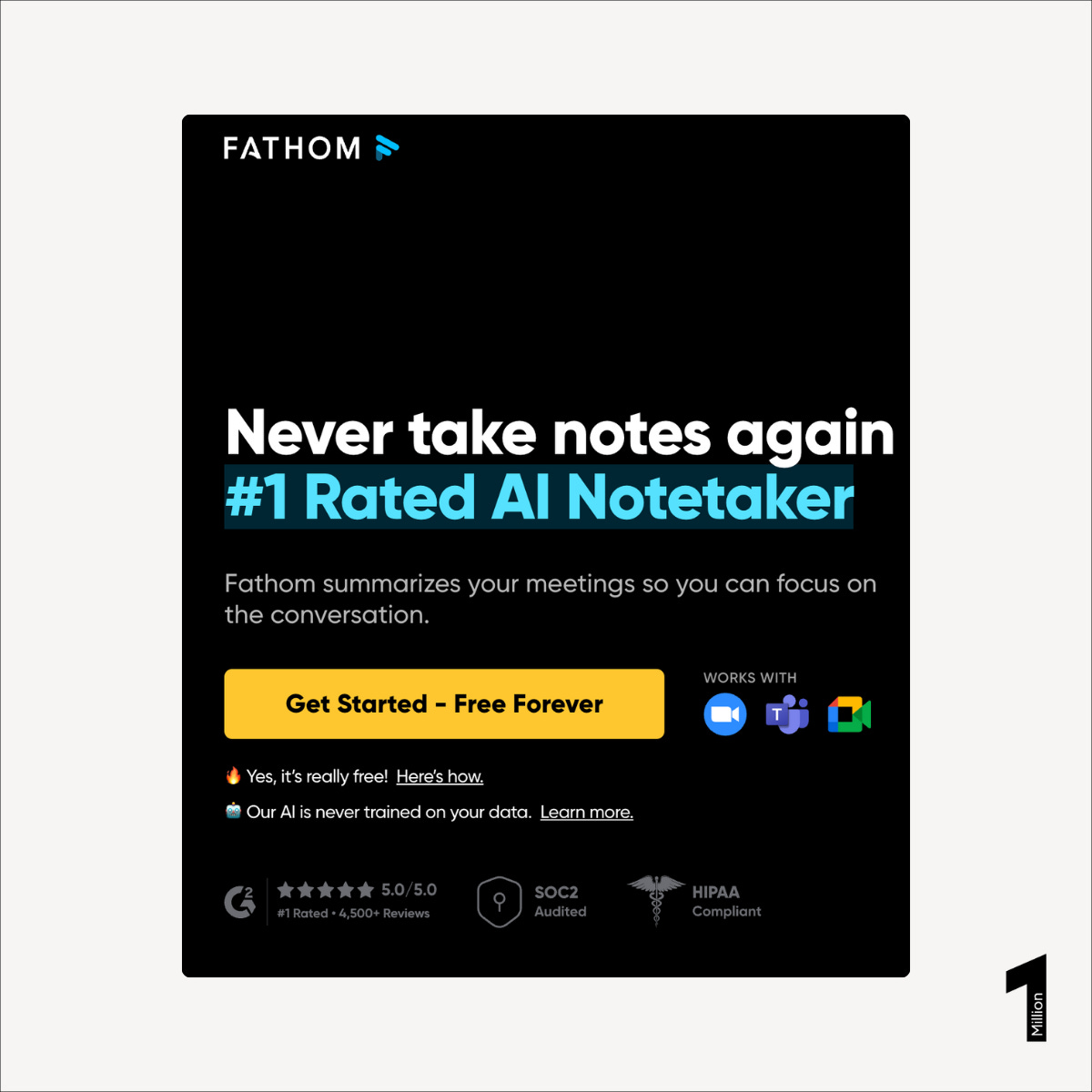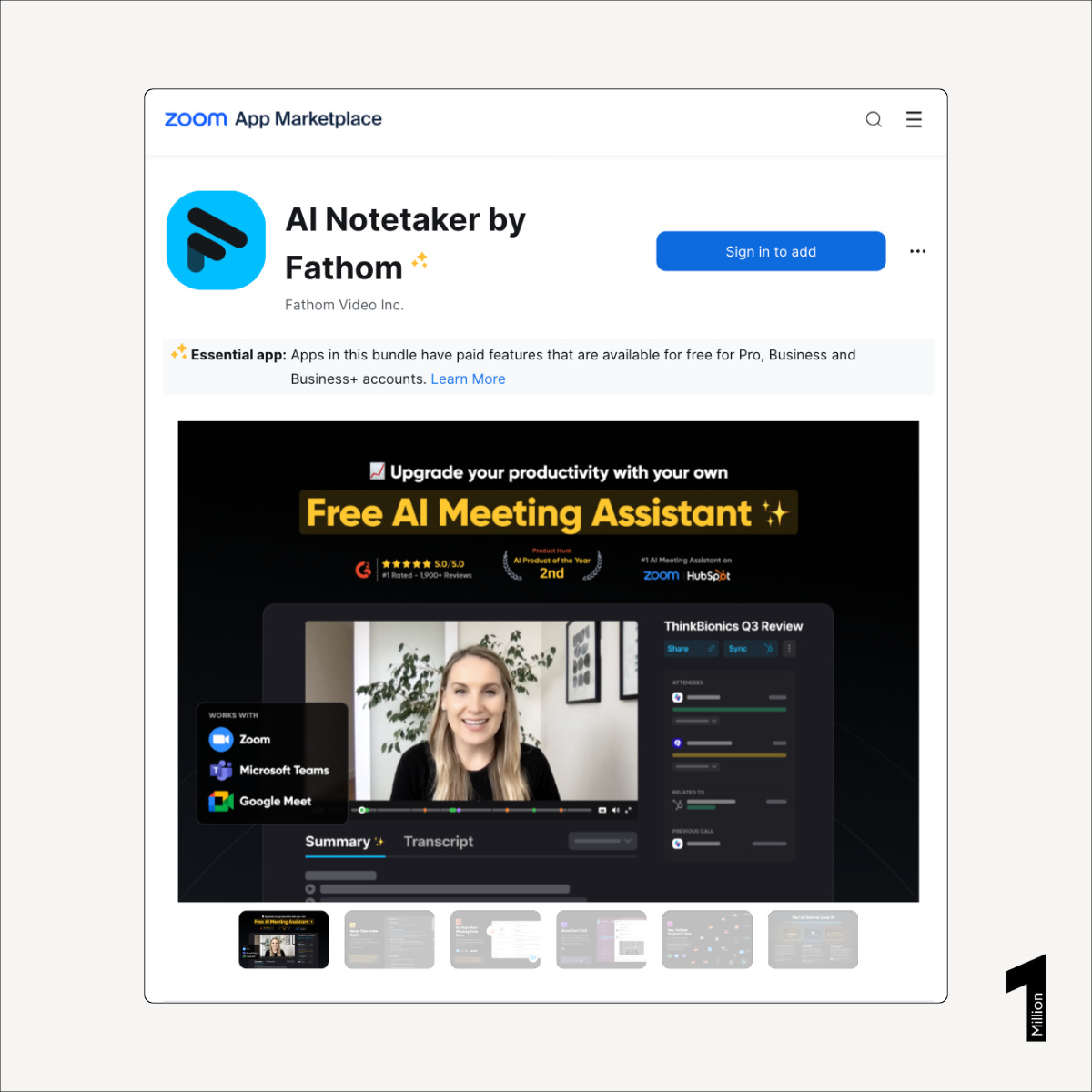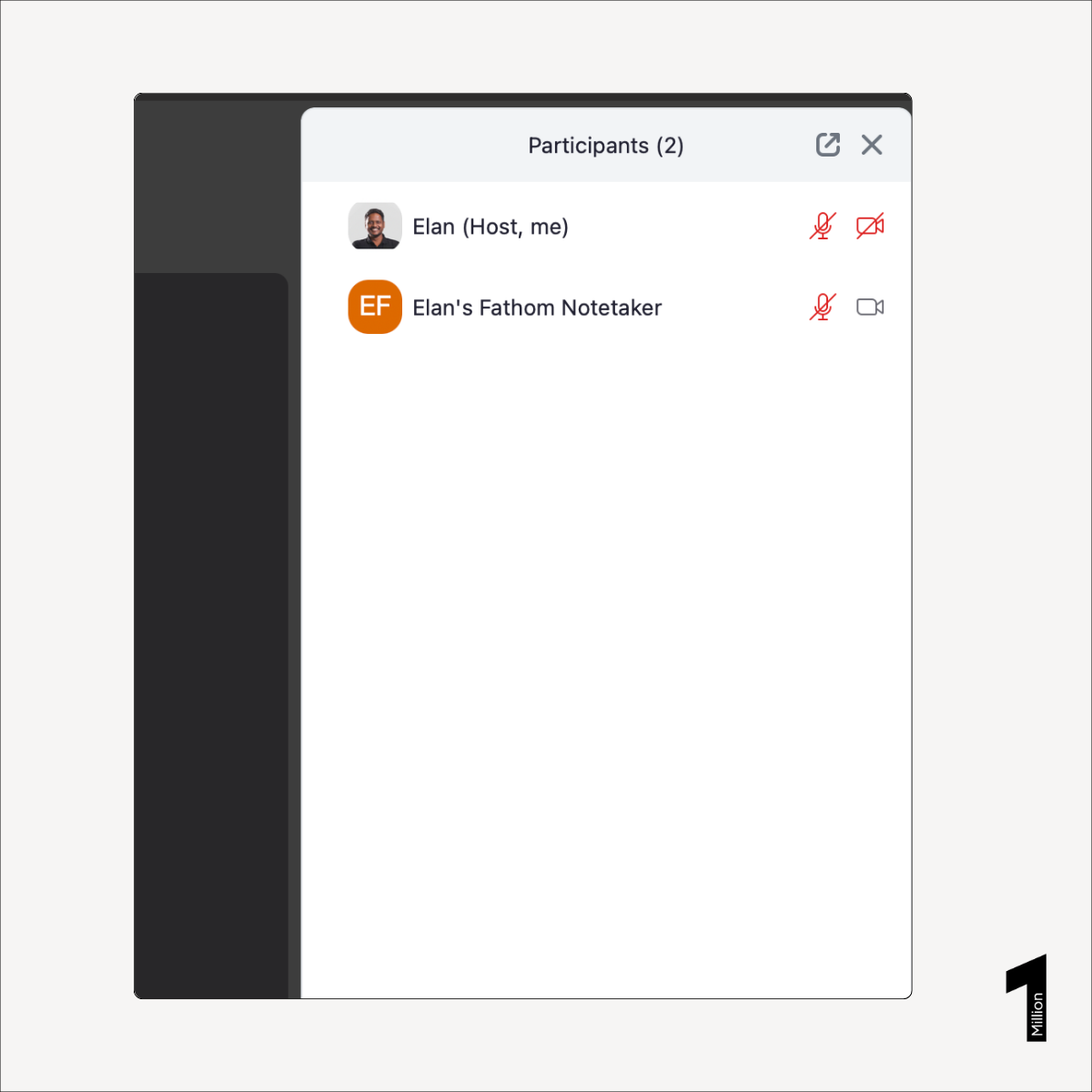How Fathom Hit Their First $1 Million
By earning trust first, then scaling with a product-led engine
Hey, it’s Elan. Welcome to my newsletter on what worked for SaaS startups that reached their first $1M in ARR. If this is your first time here, sign up and be the first to read future posts.
In this week’s ‘First Million’ series, I’ve covered Fathom. It’s the story of a seasoned founder building in a brand-new product category and turning it into a mid-eight-figure business. They hit $1M ARR in under a year by focusing on trust, reliability, and retention.
Let’s deep dive into their growth story.
About Fathom
Fathom is an AI notetaker that automatically records, transcribes, and summarizes meetings across Zoom, Google Meet, and Microsoft Teams. It solves a universal work problem: staying engaged in meetings without losing key details.
Today, it’s used by 175,000 companies, is the #1 app on Zoom and HubSpot Marketplaces, and ranks highest in user satisfaction on G2.
Fathom’s Founding Team
Fathom was founded by Richard White, best known for building UserVoice, the customer feedback platform. After more than a decade running that business, he stepped away in 2019, feeling he’d reached the limits of what he could learn there.
When starting Fathom, Richard pulled in four top engineers from UserVoice, raised early funding from his network, and approached the new venture like “speed-running a video game” he’d played before. Making faster, sharper decisions from experience.
The Premise
Serial entrepreneur: Richard White had already spent over a decade building UserVoice and brought a seasoned team of engineers into Fathom.
Painkiller product during the pandemic: Remote work had exploded, and professionals were spending hours in virtual meetings while still scrambling to take notes.
Good product ≠ Retention: In a product category like AI notetakers, retention was the real hurdle. People had to use it regularly to see the value.
Fathom’s Marketing Strategy
Fathom set out to solve one clear problem: taking and organizing meeting notes without breaking focus.
Their strategy was straightforward, get in front of people who live in meetings: sales, marketing, product, and customer success teams. The goal wasn’t just to capture calls, but to make the process so reliable and effortless that users would never go back to manual note-taking.
They didn’t try to chase every possible channel. Instead, they focused on:
Launching on the Zoom App Marketplace to quickly seed users
Fixing reliability and retention before scaling
Leveraging a free forever core product to fuel word of mouth
Monetizing managers through a targeted team plan
1. Zoom Marketplace First Launch
Zoom was the market leader in online meetings during the pandemic. Richard saw his audience was there, so he built Fathom only for Zoom.
In early 2021, Zoom launched its app marketplace and investment fund. Fathom applied and became one of the first 50 partner apps.
Launching exclusively on Zoom’s marketplace gave them instant distribution. Zoom put them in front of a huge audience, bringing 100,000+ signups in the first month.
Even today, their Zoom’s marketplace app page gets more organic visitors than marketplace’s home page.
2. Retention Before Revenue
The surge of signups hid a problem: almost no one was using the product. At one point, they had only 100 daily active users.
They found three causes:
Many signups weren’t having meetings at all, they used Zoom only for personal catchups during the pandemic.
The onboarding wasn’t intuitive.
People forgot to add Fathom to their meetings.
They couldn’t fix the first. But they improved the other two.
The biggest friction was people forgetting to turn it on. Their fix was a desktop app that auto-prompted users to activate. Activation jumped from near zero to over 60%.
People kept forgetting to turn Fathom on, so we built a desktop app that prompted or auto-joined in meetings. Overnight, activation jumped from near zero to 60%, turning a major drop-off into consistent usage.
— Richard White, Founder/CEO, Fathom
3. Layering on Review Sites
Once the base was strong, Fathom focused on credibility. They doubled down on G2 reviews and became the top-rated app in their category.
This made it easier to convert free users to paid. People saw it as the best option in the market.
Early on, Product Hunt helped us reach great early adopters, but G2 became a real growth lever. We asked happy users for reviews, built strong social proof, and shortened the sales cycle. People saw others loved Fathom and thought, ‘Great, I’ll try it too.’
— Richard White, Founder/CEO, Fathom
4. Free Forever = Virality Engine
Fathom made a bold choice: keep the core product free forever. No pricing friction, and more reason to share.
Every time someone saw Fathom in a meeting, it was a built-in referral.
5. Team Plan = Monetizing the Right Users
Richard planned to monetize after a year, but when the market shifted in early 2022 and investors started valuing revenue over user growth, he launched a paid plan sooner.
To keep virality, he charged managers instead of individual users. The new Team Plan gave managers high-level visibility into their team’s performance.
We never wanted to monetize individual users, even when they offered to pay. Our focus was charging founders and executives who wanted Fathom for their whole team and visibility into all their meetings.
— Richard White, Founder/CEO, Fathom
The sales team had been working customer support until the premium plan was ready. Once it launched, they reached out to the existing customer base. It worked: $100K ARR in the first month, $1M in eleven months.
Fathom’s Growth Flywheel
Fathom’s growth loop was simple: launch in the right place, turn new signups into active users, get them into more meetings, and let every meeting spark the next wave of users.
Why It Worked
Fathom reached $1M ARR by solving the riskiest problem first: retention. Solving it early proved the product’s value for daily use.
Keeping the core product free removed friction and turned every meeting into a referral. Charging managers kept the virality and aligned revenue with the people who had budgets.
Their priority sequence made each stage feed the next,
Activation → Retention → Amplification → Monetization
Fathom’s approach was simple: build something people love, remove friction at every step, and monetize without breaking the loop.











